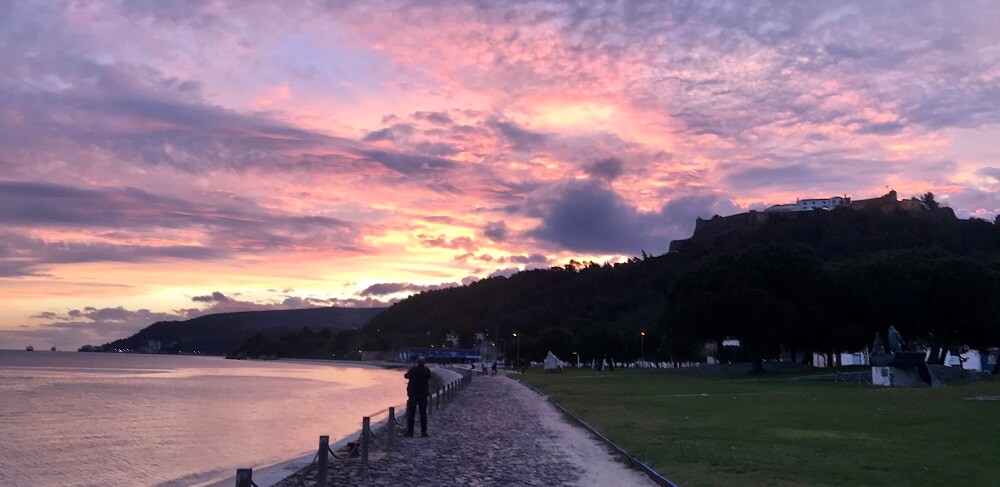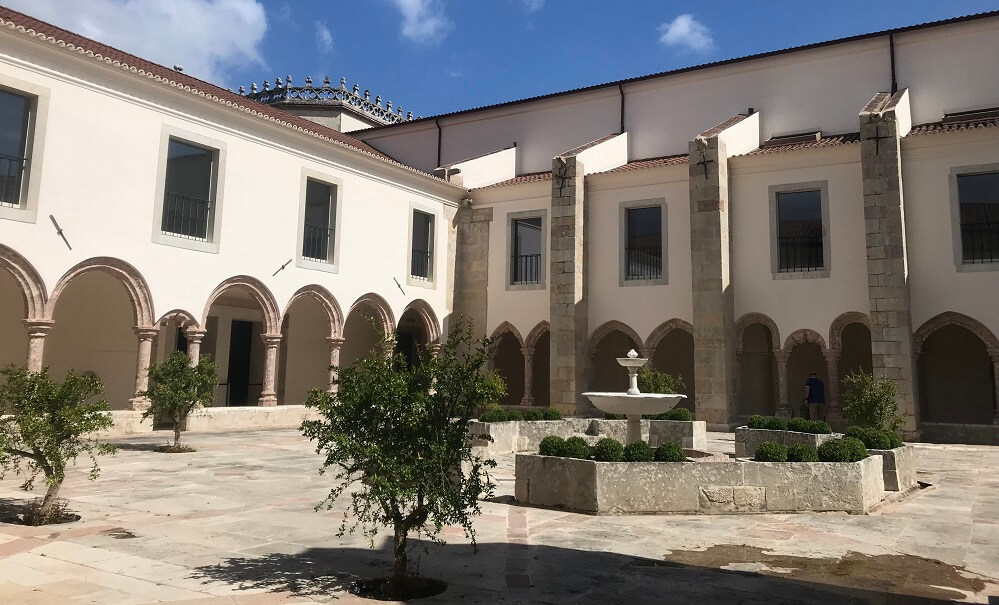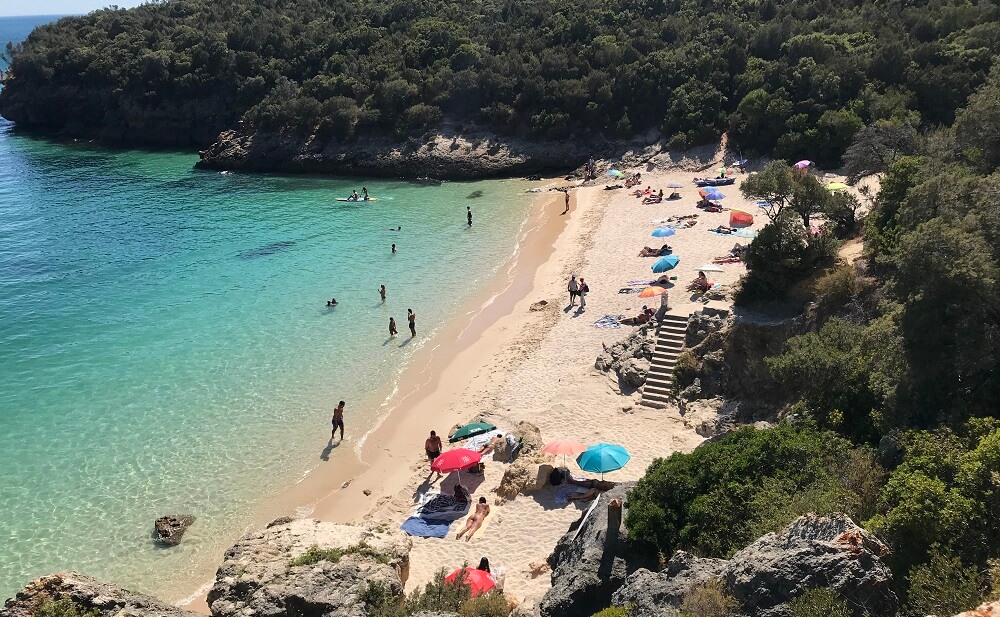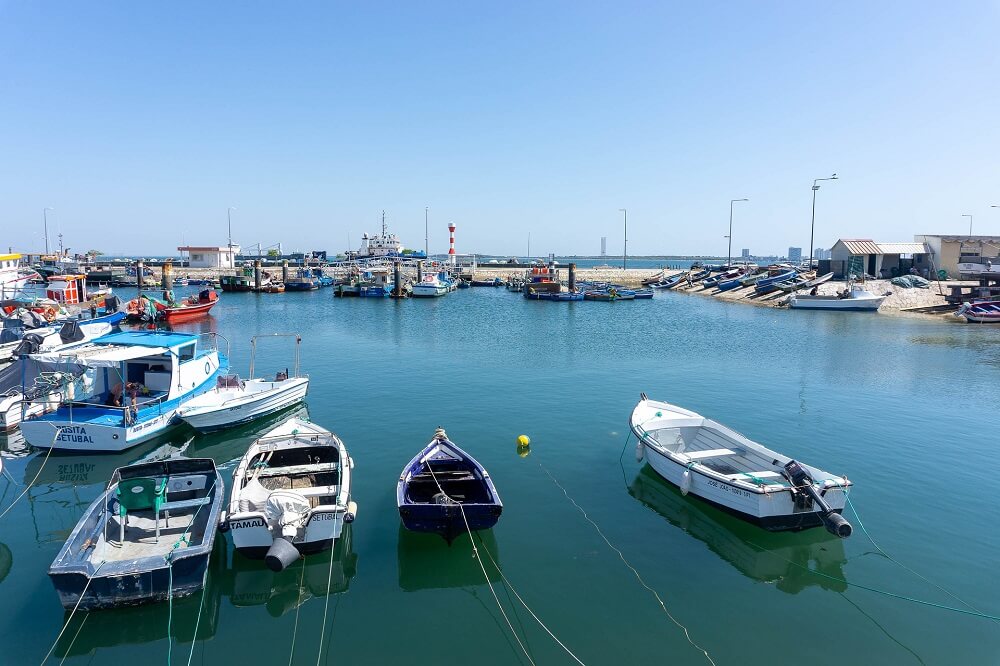Just 50 kilometres south of Lisbon and easily accessible using public transport links, Setúbal is a great day trip destination. Without a car you can explore many of the city’s main historical attractions. With a bit of organisation and effort, many of Setúbal’s natural attractions are within reach without a car too. Keep reading for tips on getting to Setúbal using public transport, what to do once you are there and exploring beyond the city with public transport. Be sure to check out my itinerary map, or just enjoy wandering around this charming seaside town!
What you need to know for a day trip to Setúbal
Why visit Setúbal
While Setúbal may not be as well-known or as popular with international visitors as Sintra or Cascais, there is still a lot to love about this port city. Explore the charming old town, wander along the picturesque Sado riverfront or head to the amazing beaches of Troia or the Serra da Arrábida. There are some picturesque walking trails that lead you through the eastern edge of the Serra da Arrábida. Or explore the city’s historical monuments including a 14th century fort. The city’s seafood restaurants also bring a lot of foodies to Setúbal, excited to try the famous choco frito (fried cuttlefish).
How to get to Setúbal with public transport
Travelling by public transport to Setúbal from Lisbon, you have two options – bus or train.Trains are slightly more comfortable and reliable, but there isn’t that much difference between the two options. I recommend choosing whichever is more convenient to your accommodation in Lisbon.
Train
Train tickets from Lisbon to Setúbal are €4.55 one way. This route is managed privately by Fertagus, so you’ll need a different Viva Viagem card to the one you may have been using in Lisbon. The train departs Lisbon from Roma-Areeiro station before calling into Entrecampos, Sete Rios and Campolide. The journey on the double-decker train is about one hour, crossing over the Ponte 25 de Abril. Trains run about every hour until after midnight and are generally more reliable than buses. Check train timetables here.
Buses
You can also use your Viva Viagem card on the buses, which cost €4.50 one way, or purchase a ticket onboard for €4.80 (cash only). If there is no traffic, the bus journey can be around 35 – 45 minutes. But be warned – buses can arrive not just late, but fail to arrive at all. When the frequency is one every hour or more, this can really put you behind schedule.
So why bother with the bus? Well, the 561 rapida bus has a stop in Alcântara (handy if you are staying in Lisbon’s west) and the 562 stops in Oriente before going over the Vasco da Gama bridge. There are also a couple of regular buses (not rapida) that pass through some of the towns between Lisbon and Setúbal. These take longer and are even more infrequent than the rapida, but offer a more scenic route than heading straight down the A2. The last buses depart Setúbal before 8pm, so plan to return with the train if you want to stay out late. Check bus timetables here.
What to do on a day trip to Setúbal
Both the train and the bus drop you at the train station in Setúbal, in an unattractive and uninteresting part of town about 15 minutes walk from the centre. Don’t let these first impressions put you off, just make a beeline for Praça do Bocage and from there you can start exploring the historical centre or head towards the River Sado.
I’ve created a walking itinerary that covers the highlights of the city (google map link at the bottom of the page). You’ll need good walking shoes as it’s 10 kilometres in total, but don’t let that put you off! It’s mostly flat except for the hill up to the Forte de São Filipe.
Praça do Bocage & Casa do Turismo
Setúbal’s main square, Praça do Bocage, is named after the 18th century poet who was a native of the city. Besides the statue honouring its namesake, the square hosts a number of cafes where you can grab a coffee and enjoy some people watching. The building in the north-west corner with a giant black cat atop the roof is the Casa do Turismo. Here you can sample local wines on the terrace overlooking the square and church of São Julião below.
Miradouro do São Sebastião & Historical Centre
The miradouros (lookout points) of Lisbon are well known, but Setúbal also has one of its own overlooking the port and River Sado. It might not be as pretty as some of the more famous lookouts of Lisbon, but it’s still worth the short walk for the view. Take your time wandering through the historical centre to peruse the boutiques on your way and enjoy discovering hidden gems down the narrow lanes.
Mercado do Livramento
If you’re on a day trip, you probably aren’t in the market for the fresh produce on offer at Setúbal’s market. But even if you don’t want to carry fresh fish around in your bag all day, the Mercado do Livramento is worth a visit anyway. Most of the stalls sell fresh food, but there are some cafes and a few stalls selling Portuguese handicrafts. Get there before midday to find the most stalls open and the market full of life.
Avenida Luísa Todi
This pedestrian avenue dedicated to Setúbal’s famous 18th century opera singer is one of the nicest places to wander in the city. Lined with exotic trees, it’s particularly beautiful in spring when the purple flowers of the jacaranda trees are in bloom. Paved with calçada portuguesa, the one kilometre path is an excellent place to stop for a rest at one of the esplanadas located up and down the street.
Casa da Baia
Part visitor centre, part cafe, the Casa da Baia is a fantastic spot to get more information on the activities available in Setúbal and the surrounding area. With a cafe and tranquil courtyard, the Casa da Baia offers plenty of places to relax. Wander the free exhibition dedicated to the Sado Estuary bottlenose dolphin to learn more about the marine mammal and its habitat.

Sado River waterfront and Parque de Albarquel
To the west side of the fish market, you can meander along the picturesque banks of the River Sado, looking across the bay to the Troia Peninsula. In summer, expect the area to be busy with locals lazing about on the grass and filling the seafood restaurants all along the street.
You can continue all the way to the Parque Urbano de Albarquel, a nice park with grass and big shady eucalyptus trees perfect for picnicking under. If you take the stairs at the western edge of the park, you will arrive at A Vela Branca, one of the nicest bar / restaurants in Setúbal. At low tide you can walk along the sand for a short cut to Praia de Albarquel on the other side of Fort de Albarquel. Unfortunately at high tide this section is completely underwater and you have to go around, which involves a big hill.
Praia da Albarquel
Albarquel Beach is Setúbal’s closest beach (the water along the river closer to the city is not safe for swimming, though that doesn’t seem to stop the locals splashing about). It’s certainly not the prettiest beach of the Serra da Arrábida, but has sand and water and is still popular for those who can’t be bothered/can’t travel further along the coast. There is also a bar restaurant here.
Forte de São Filipe
Perched atop a hill overlooking the bay, a stop at Forte de São Filipe is worth it for the views alone. It’s free to visit and there is a cafe where you can rest and enjoy the vistas of the estuary, Troia and the Atlantic Ocean.

Monastery of Jesus
Built at the end of the 1400s this monastery of Poor Clare nuns is one of the first examples of Portugal’s famous Manueline architecture. You can visit inside for a small fee, but a look inside the church and a walk around the outside to admire the façade is sufficient unless you’re a big fan of this kind of thing.
Beyond Setúbal
Troia
On a hot summer’s day, you may want to skip the walking tour of Setúbal altogether and head straight for the white sandy beaches of Troia. Just a 20 minute ferry ride across the bay, Troia is a popular resort town that gets very busy in the summer. Passenger ferries depart just down from the Miradouro do São Sebastião, and you may even be lucky enough to spot some dolphins on your journey!

Arrábida beaches by bus
The beaches of the Serra da Arrábida get SUPER busy in summer. With not enough parking to support the influx of beachgoers, roads close during the day from June – September during “bathing season”. The good news is that buses operate to transport travellers to the most popular beaches during this time, opening up the option to visit without a car. Find out more about the buses here.

